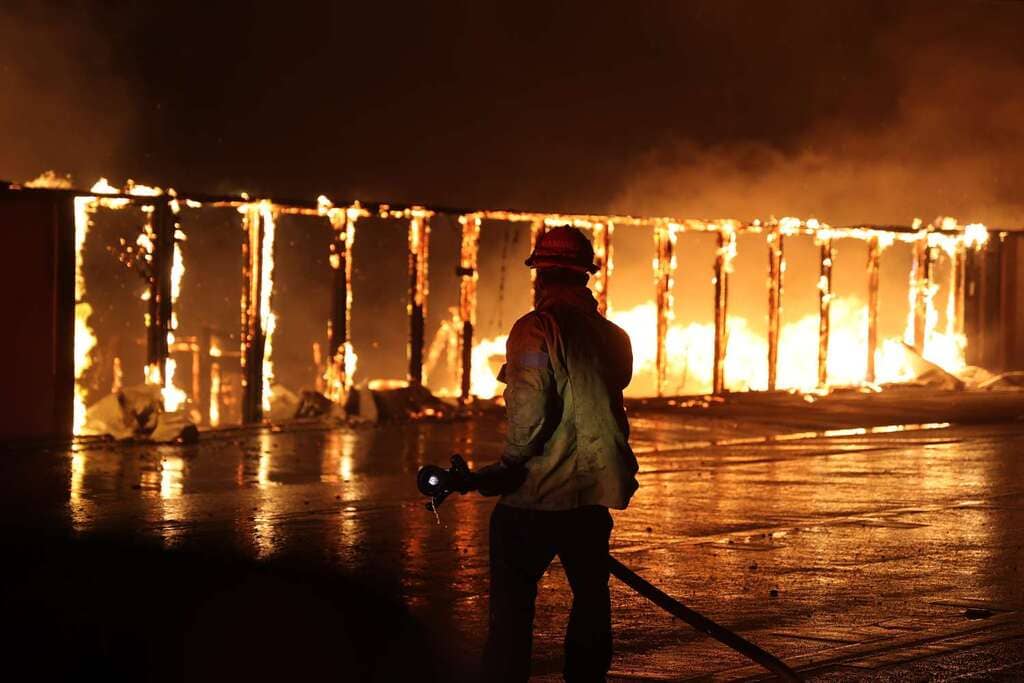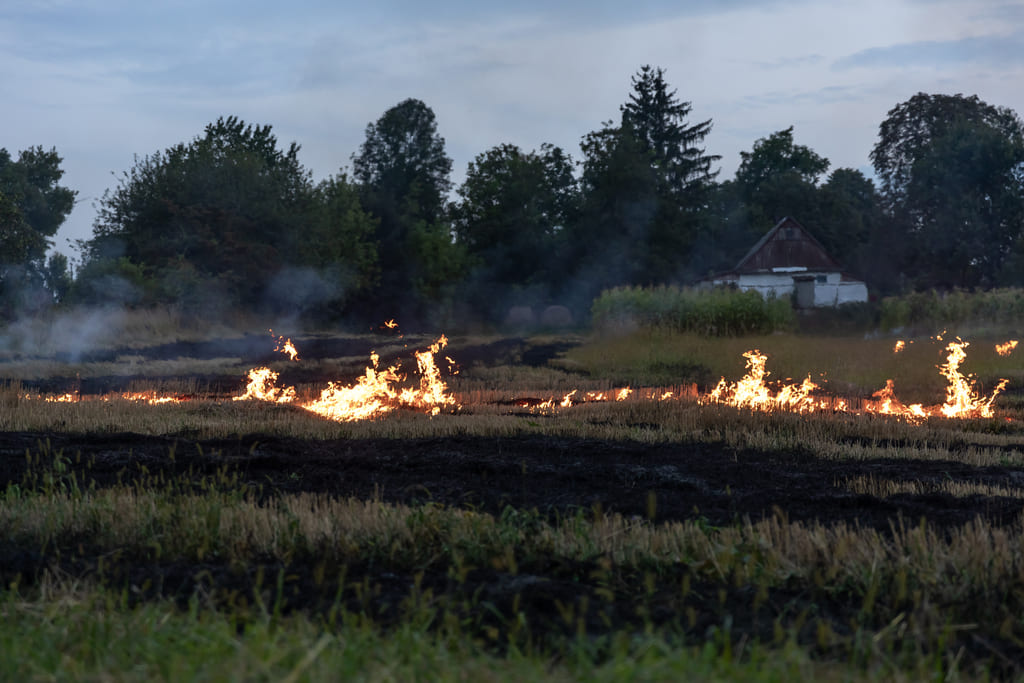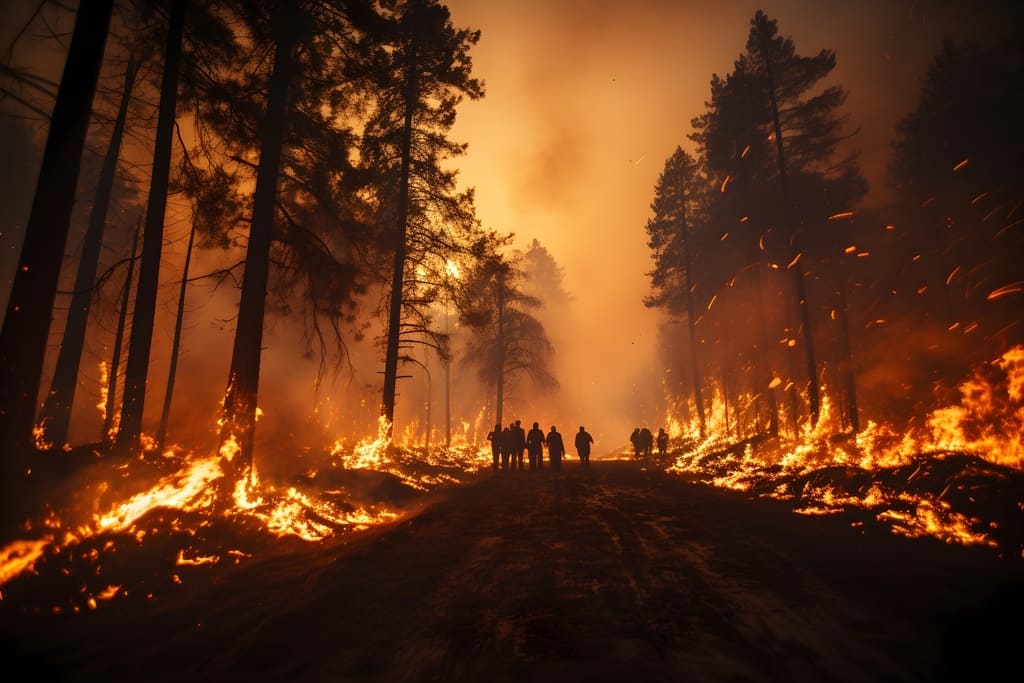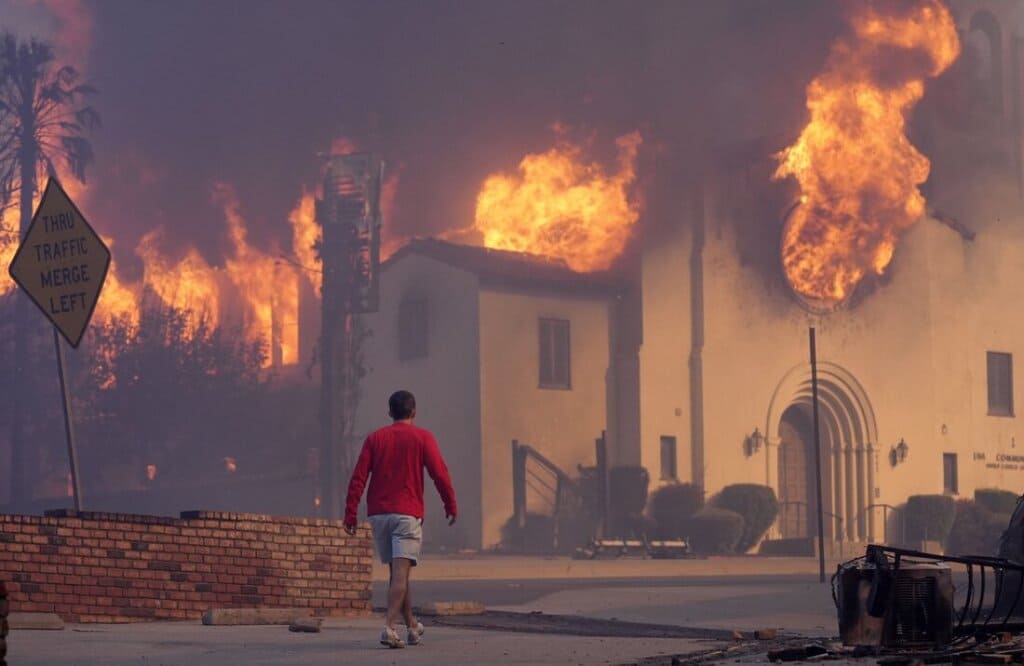The wildfires in California 2025 highlight the urgent need to continue addressing the underlying factors contributing to these devastating events. As a planning, environmental, and engineering consulting firm, with deep roots in Southern California, Dudek is touched personally and professionally by these tragic events. We are proud to be at the forefront of efforts to enhance climate resiliency through urban forest management and wildfire protection planning.
Cities and their metro regions are increasingly grappling with wildfires and their devastating effects on lives, homes, businesses, infrastructure, wildlife, and air quality. Wildfire smoke can travel great distances, causing respiratory and cardiovascular illness and death in cities far from the fire itself. Wildfires in California 2025 are set to become more frequent and intense in the coming years as temperatures rise and droughts worsen – and tackling wildfire risk is new for many cities. This article provides practices that could help cities reduce the risk to life and property with the help of urban planning.
Table of Contents
The Role of Climate Change in Wildfires in California 2025
Climate change has significantly contributed to the increasing frequency and intensity of wildfires in California 2025. Rising temperatures, prolonged droughts, and shifts in precipitation patterns have created conditions that are more conducive to wildfires. According to the Fifth National Climate Assessment, warmer and drier conditions, coupled with prolonged droughts, have stressed forest vegetation, leading to pest outbreaks and tree death, which increase the accumulation of surface fuel. This has resulted in larger, more intense, and more destructive wildfires in recent decades.
Planning for climate resilience requires assessing risks and vulnerabilities, measuring readiness and adaptive capacity, and developing strategic actions to strengthen the capacity to respond. Whether the goal is to establish a sustainable urban forest with sufficient canopy cover to cool communities or to reduce potential wildfire impacts, effective urban forest management plans, wildfire protection plans, and evacuation plans are critical as communities strive to build resilience in the face of a changing climate.
Suggested article to read: What are 2025 Construction Trends to Watch for?
How can Urban Planning Reduce Wildfires in California 2025
1. Develop air quality monitoring to manage the health risk from wildfire smoke
Develop air-quality monitoring to acquire the data needed to measure and communicate the air quality and health impacts of wildfires in California 2025. How to set standards and monitor outdoor air quality explains how cities can develop robust monitoring to manage risk from particulate matter, as well as other air pollutants. Cities at risk from wildfire smoke should ensure that measuring PM2.5 concentrations in wildfire season is among the specific goals shaping the design of their monitoring networks. In particular, monitoring can target disadvantaged communities that may be less likely to have air-purifying technology at home. Ensure that wildfire experts, as well as local civil society groups, are involved in developing the air quality monitoring plan.
2. Developing a wildfire risk reduction strategy to prevent local wildfires
Cities at risk from wildfires in California 2025 at or within their municipal boundaries should take precautions to reduce their likelihood and severity and to manage their effects. Wildfire risk reduction should be the shared responsibility of a range of public and private entities, with priority sectors including land use and spatial planning, housing, and utilities, as well as the emergency management sector.

3. Map areas within the city that might be at greater risk from wildfires
Lower-density neighborhoods in the ‘wildland-urban interface’ (WUI) – areas that border wilder, vegetated areas and typically contain significant fire fuel – will usually be most prone to wildfire. Fire fuel is dry material, such as fallen leaves and twigs, that can act as kindling. The Austin Fire Department’s Austin-Area Wildfire Hub, which acts as a portal for information sharing, cross-agency initiatives, and grassroots coalition building to prepare for wildfire, includes a host of maps and assessments of local wildfire risk alongside many other resources.
4. Incorporate wildfire risk into codes and standards for buildings and infrastructure
Incorporate wildfire-resilient design, materials, and siting into codes for new buildings and promote the implementation of retrofitting measures in existing buildings. These codes can apply either to buildings and infrastructure in areas identified as high risk or more broadly. The International Wildland-Urban Interface Code provides a model code that can be adopted or adapted; cities that have done so include Austin, which became the first city in Texas to adopt such a code in 2020, understanding that over 60% of current structures (and rising) are within a 1.5-mile radius of the WUI.
Use voluntary programs and incentives and consider requiring the disclosure of wildfire risk to homebuyers to encourage uptake. In the United States, the disclosure of wildfire risk is currently required in only two states, California and Oregon, whereas 29 states require flood disclosure, such as whether the property sits on a flood plain or the cost of flood insurance, as part of a sale.
5. Design and manage green infrastructure to reduce wildfire risk
On public land, plant fire-resistant vegetation and implement fuel-reduction techniques, such as prescribed burns (where fires are lit under controlled conditions) and the removal of fire fuel. As well as reducing the risk of wildfires in California 2025 starting and spreading, fuel reduction can provide easier access routes for firefighters.
There are no ‘fire-proof’ plants, but low-growing, high-moisture plants with a low sap or resin content, hardwood trees (which are less flammable than pine, fir, and other conifers), and other fire-retardant and fire-resistant vegetation will help to reduce wildfire risk. These species tend to be more heat and drought-resistant, too. Create firebreaks in larger vegetated areas, such as forested parks. Also, encourage people and businesses in at-risk areas to take responsibility for removing fuel on their property; this should be part of awareness-raising efforts.
6. Integrate wildfire management into spatial planning
Update planning policies to discourage low-density urban sprawl and limit the expansion of WUI areas and, with it, wildfire risk. The vast majority of wildfires are started by people, so low-density, high-fuel urban expansion increases the likelihood of sparking a new fire, as well as increasing the damage of fires that do occur. Also, minimizes land fragmentation and the construction of constrained road layouts. Across the United States, planning policies have enabled the number of new homes in WUI areas to grow significantly since 1990.
WUI is the fastest-growing land use in the country and a third of homes are already located there, fueling current and future wildfire risks.7 Requiring the disclosure of wildfire risk can also help to discourage urban expansion in at-risk areas but should be secondary to policies that restrict the expansion of the WUI. Even with disclosure policies in place, 645,000 homes are forecast to be built in California by 2050 in areas currently designated as ‘very high’ wildfire severity zones.

7. Develop a wildfire response strategy
Collaborate with regional or national actors to plan and implement actions to protect residents during a wildfire event. Pooled and coordinated emergency operations will typically mean better access to knowledge and resources, as well as consistent public messaging.
In your strategy, be sure to:
1. Establish the fire danger index and air quality index threshold
An air quality index will support the forecasting, reporting, and response to air quality incidents – including, but not usually specific to, wildfires in California 2025 and wildfire smoke events. An index is used to track the most common ambient air pollutants that are regulated under a country’s air quality regulations and will focus on health effects and exposure risk within a few hours or days of breathing polluted air. London has a commendable system, though this is not focused on wildfire smoke.
Cape Town’s Fire Danger Index helps the city to communicate clearly how serious the wildfire risk is on any given day and is linked to a Fire Danger Index Table which explains what residents should do, and not do, at different alert levels.
2. Seek access to wildfire early warnings
Through the use of satellite data, fire risk can be predicted up to two weeks in advance and incorporated into weather forecasts. This warning can give cities critical time to coordinate a response. In addition, wildfire (heat and smoke) detection technology can alert emergency responders in the early stages of a fire, when a blaze may have the best chance of being extinguished. Cities can invest in these systems or seek access to existing regional, national, or global systems, such as the Global Early Warning System for Wildland Fires and the Global Wildfires in California 2025 Information System.
Also, consider involving residents in wildfire early-warning systems. For example, in 2021, the California Air Resources Board launched a Smoke Spotter app, which provides 24-hour state-wide forecasts, alerts, live air-quality data, and more. In Cape Town, it is considered a civic duty to report wildfire burning on your property to neighbors and the Fire Protection Association.
3. Establish a clear wildfire response and evacuation plan
Wildfires in California 2025 response plan should include, for example, deploying firefighting equipment and infrastructure, such as aerial firefighting planes or helicopters, and establishing evacuation routes and evacuation centers. Also, encourage residents to develop their wildfire preparedness plans.

Conclusion
The wildfires in California 2025 are a stark reminder of the urgent need to address climate change and its impacts on our environment. By understanding the factors contributing to these events and implementing comprehensive climate resilience and forest management strategies, we can mitigate the risks and build more resilient communities. Dudek remains committed to efforts to adapt to a changing climate and protect communities from the devastating effects of wildfires.
FAQs
How can updated building codes reduce wildfire risks?
- Answer: Requiring fire-resistant materials in new buildings and promoting retrofits for older structures can limit fire damage. Cities like Austin have adopted the Wildland-Urban Interface Code to strengthen protections in fire-prone areas.
How does air quality monitoring help manage wildfire smoke?
- Answer: By tracking PM2.5 levels, cities can measure the impact of wildfire smoke on public health, especially in communities without air-purifying technology. This data helps improve safety measures and emergency responses.
Why is it important to map high-risk wildfire areas?
- Answer: Wildfire-prone zones, particularly in wildland-urban interface (WUI) areas, have dry vegetation that fuels fires. Mapping these locations helps cities prepare better, coordinate emergency responses, and implement fire prevention strategies.
What role does urban planning play in wildfire prevention?
- Answer: Smart planning limits urban sprawl into high-risk wildfire areas, reducing the chance of human-caused fires. Controlling expansion in WUI regions and enforcing zoning policies can lower long-term wildfire threats.
Suggested article for reading:
5 Biggest Construction Projects in Europe, Last One being the Most Important
2025 Construction Forecast: Key Trends to Watch
2025 Construction Costs Forecast: What to Expect
7 Biggest Construction Projects in History for 2025
4 Biggest Construction Projects in the World Right Now; 2025 Review
7 Biggest Construction Projects in the USA Right Now; 2025 Review
Resources:
Dudek | c40knowledgehub | osfm | linkedin
For all the pictures: Freepik



